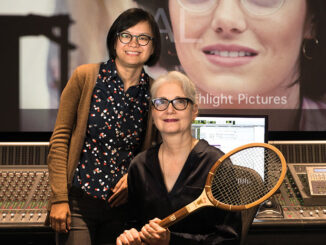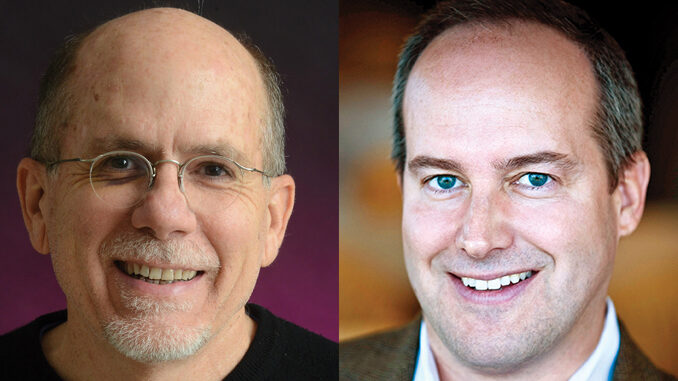
by Bill Desowitz
This year’s Oscar nominees for Best Sound Editing transport us to three very distinct war zones (American Sniper, The Hobbit: The Battle of the Five Armies, Unbroken), take us for a roller-coaster ride inside a wormhole and a black hole (Interstellar), and put us in the mindset of a has-been movie star going out of his mind (Birdman).
“What was unique about American Sniper’s soundtrack was that early on in the post-production process, a decision was made to tailor the sound in a realistic manner, almost documentary-style,” explain supervising sound editors Alan Robert Murray and Bub Asman via e-mail. The team was also nominated for a Motion Picture Sound Editors Golden Reel Award for Sound Effects and Foley for the film.
This was at the behest of director Clint Eastwood, who was drawn to the war- front/home-front conflicts for legendary Navy SEAL sniper Chris Kyle (played by Oscar-nominated Bradley Cooper). “This meant that a very minimal amount of musical score would be utilized in the movie,” continue Murray and Asman. “During the home-front sequences, the underlying tension of the horrors of war that our main character carried within was then orchestrated through either Tom Ozanich’s intricate sound design or enhanced levels of natural sounds, building to an internal crescendo. The battle sequences’ intensity was drawn out by enhancing the concussive elements within the multi-channel recordings of each weapon and careful placement in the theatre soundscape to surround the audience.”
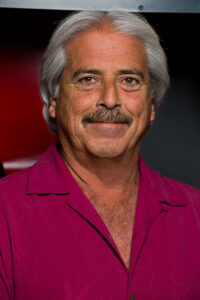
Murray and Asman, who previously shared an Oscar for Letters from Iwo Jima (2006), offer the following criteria for why they believe they were nominated by the Academy’s Sound Branch: “Did your work enhance the movie-going experience?
Did it help the audience feel what the characters were experiencing? Did they feel like they were in the location of the scene? Did they not only hear the sound you were presenting but also feel it?”
For Alejandro Gonzalez Iñárritu’s Birdman or (The Unexpected Virtue of Ignorance), starring Oscar-nominated Michael Keaton, the unique sound design challenge complemented the experimental attempt at a single-take experience. The nominated supervising sound editors are Aaron Glascock and Martin Hernández, MPSE. They were also nominated by the MPSE for both Sound Effects/Foley and Dialogue/ADR for the film.
“As Birdman is told in the context of a constantly flowing stream, no hard visual or sound cuts are used in the narrative,” explains Glascock. “The normal opportunity to cut into a scene with a bump was never there — no reset — so the flow had to have definition; any found energy had to develop linearly. In order to depict a noticeable movement shift within a space, locations and actions used layers that would shift from normal to intense depending on perspective.
“The tones and layers were always changing in mix,” he continues. “Shifting throughout constantly, they were not backgrounds any more; in function, they were all hard effects. Individual walls had their own sounds — shadows, ducts and resonating closed doors, always coming and going. The track orientation was swinging like a compass.”
Glascock thought the nomination was a tribute to the very well-defined, high-density vision of the director. “With Alejandro, there was always a quest to develop a sense of poetry in the track,” he says. “This was true with effects, backgrounds, crowds and music. Beneath the surface, behind the imagery, there was a pulse, a current that was always running. This was an emotional force that had to support his vision. If it did not speak to him, it was gone and something else was developed.”
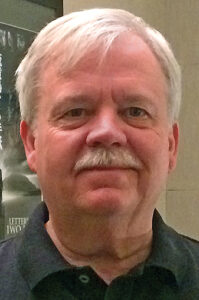
For The Hobbit finale, The Battle of the Five Armies, supervising sound editors Brent Burge and Jason Canovas were charged with soundscapes for two very different battles: the Laketown assault by the dragon Smaug at the beginning, and the climactic war involving all of the various creatures.
“The sound design for Laketown was quite a challenge, as it was very action- packed and fast-moving; we had to audibly convey a lot of different emotions and story points in quite a short time onscreen,” recalls Canovas. “We tried to give the Laketowners different progressive moods as the sequence developed within the loop group session, starting off with quiet, hushed, worried and suspenseful tones, then moving to more animated panic, all the way to full-on terror, then moving back down to despair. The biggest challenges we faced were trying to convey different emotions when we had such a lot happening on screen. Peter Jackson fills his frames with so much action; what to lay on the soundtrack is a huge challenge.”
“It’s one of those sequences where light and shade build dynamics, and the focus on the story becomes the priority,” adds Burge. “In order to do this, we are always searching for the right material. The way we do this is through recording vast amounts of the material we need.
“The key to the final battle was breaking it down into how to best achieve contrast and definition between the armies, so at any time the viewer had a clear understanding of the story, geography and who was fighting who,” he continues. “Sound designer Dave Whitehead built the armies sonically, with Hayden Collow re- inventing the combat from the established styles we set in Lord of the Rings. Creating the contrasts between the armies was something Peter Jackson felt imperative to keep the soundtrack exciting and driving forward. Creatures were also massive in scale and variety, both the English-speaking and the pure animal.”
Jackson gives his supervising sound editors great freedom to develop their own sonic concepts to complement the extraordinary visual designs he creates with Weta, and these designs are often unlike anything that was done before. “Trolls with spikes for legs, and eyes sewn shut with chains attached for steering,” Burges mentions as an example. “As much freedom as we get, these concepts sometimes have to be changed at a moment’s notice in the mix as, in the context of the soundtrack, they don’t achieve what Peter wants.”
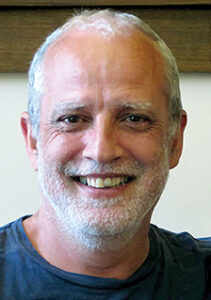
According to Canovas, the added complication in the battle was also trying to make each army unique. “For example, the Dwarf army sound effects were given a heavier iron sound; the Elves brighter, steel sounds; and the Orc armies more rough, dirty, metallic sounds,” he adds.
Canovas suggests that their nomination is a nod to the outstanding work this crew has continued to do on both of the Tolkien trilogies. “I think the Academy has recognized just how much goes into a Peter Jackson soundtrack,” he posits. “How busy it is, how little time we actually get on screen to move from one emotion to another, and how the soundtrack helps and directs the audience along the way.”
With Interstellar, director Christopher Nolan wanted to find a new sonic approach to the sci-fi epic, according to supervising sound editor Richard King, a three-time Oscar winner for Inception, The Dark Knight and Master and Commander: The Far Side of the World.
“We steered clear of the usual interior spaceship whirs and hums, in favor of a quiet, very naturalistic sound — except when the engines are lit up!” King notes. “There are a lot of contrasts, between the vacuum of space and a cornfield somewhere in the Midwest. The weightless feeling that silence gives you contrasted with the sound and fury of a pressurized spacecraft coming apart at the seams as it approaches a black hole or enters the atmosphere of an alien planet. Silence can be incredibly eloquent, and crossing that line between silence (the unfamiliar) and sound (the recognizable world) can be a very powerful moment.”
King, who was also nominated by the MPSE for Sound Effects/Foley for the film, is gratified that the Academy’s Sound Branch recognized “that we tried to do something new, that we tried very hard to find sounds for experiences that no one has yet had. I’m very proud of the film and our work on it.”
Unbroken, which recounts the extraordinary life of Olympian war hero Louis Zamperini, takes place in his home town of Torrance, California, as well as at the Berlin Olympics, during aerial combat, at sea, in the jungle, and in desert and mountain regions of Japan.

“To add to that, each location represents a very different aspect of Louis’ emotional journey as he went from national hero to castaway to prisoner subjected to horrific abuse, and back again, according to the film’s nominated supervising sound editors, Becky Sullivan, MPSE, and Andrew DeCristofaro, who responded by e-mail. “We were equal parts daunted and thrilled to tackle the challenge of creating so many unique soundscapes.” The team also received MPSE nominations for Sound Effects/Foley and Dialogue/ADR for the film.
“Director Angelina Jolie wanted Unbroken to sound authentic and realistic,” the sound editors say. “She gave us an emotional road map for what each chapter of the film should convey. She wanted the audience to experience what Louis Zamperini did and convey those emotions with sound. With that, she gave us a great deal of creative space.”
Throughout the film, the sound editors built layer upon layer of sound, often in very subtle ways, to help the director accomplish her goal. “We created just about everything from scratch to get things exactly right,” they explain. “We acquired one of the only vintage, unmodified WWII- era B-24s that is still air-worthy and then recorded every compartment, every switch, every nook and cranny of that plane, along with the massive engines. We used Foley, effects, backgrounds and ADR to replace almost every sound when Louis, Mac and Phil are adrift on the open ocean. For the jungle, we researched each bird, insect and animal sound to be accurate to time and location. Every single punch Louis took in prison was realistic and unique.”

For Sullivan, Unbroken represents the highlight of her career. “To bring Louis’ story of resilience, survival and redemption to life through sound was a challenge and also a labor of love,” she claims. “Unbroken is an experience that will stay with me always.”
Likewise, DeCristofaro, who has been mentored by Sullivan, counts Unbroken as the most important film on which he has worked. “I had not read Laura Hillenbrand’s book prior to taking on the project, but I grew up in the South Bay area of Los Angeles, driving past Zamperini Air Field and, as a USC alumnus, I’ve walked through Zamperini Plaza on my way to football games,” he says. “Unbroken gave me the opportunity to know and appreciate Louis on a whole new level.
“We would like to think that as the [Sound Branch] members watched Unbroken, they experienced the sound from Louis’ point of view; that they felt his emotional journey as they listened,” the sound editors posit. “There may have been particular sequences that caught their attention, but we hope the experience of the whole track kept them engaged. Whatever it was they saw, we are profoundly grateful that they chose to nominate Unbroken.”



